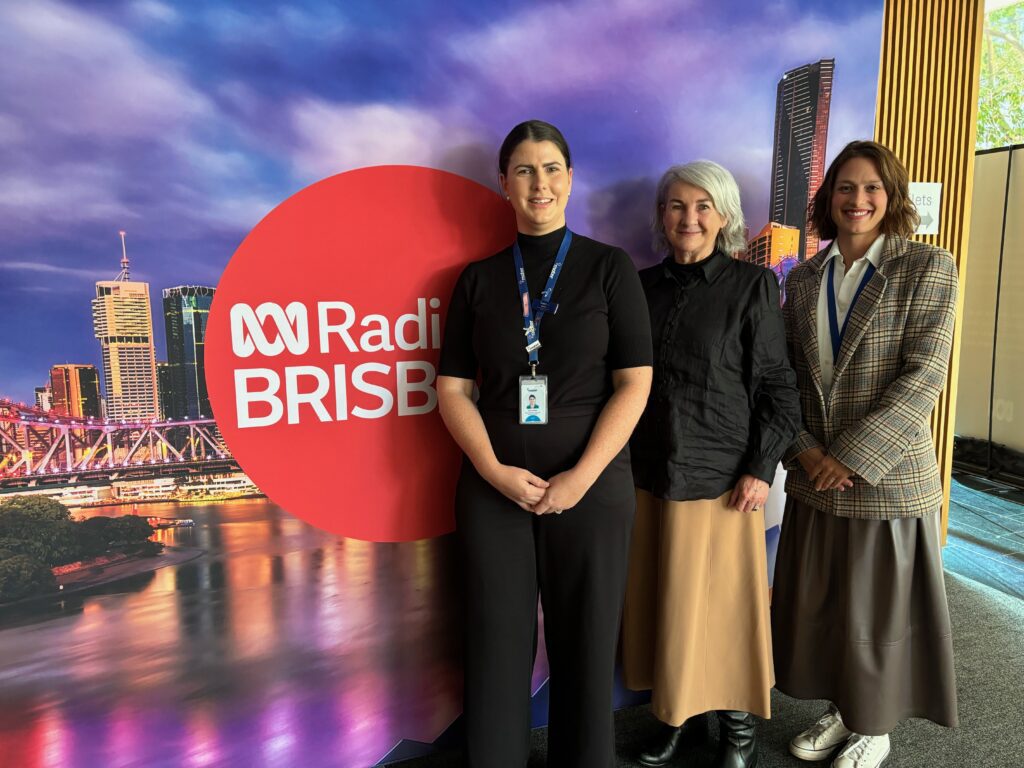For parents who have experienced stillbirth and go on to have subsequent pregnancies, it can be an incredibly difficult and complex time.
The Stillbirth CRE and Perinatal Society of Australia and New Zealand (PSANZ) have released the 2024 edition of the Care Around Stillbirth and Neonatal Death (CASaND) Clinical Practice Guideline. This edition includes a new section on how to care for families who go on to have subsequent pregnancies following stillbirth or neonatal death.
ABC Radio National's show Life Matters presented this important topic during a powerful discussion on Thursday morning.
Host Hilary Harper, who herself is a mother with lived experience of stillbirth, spoke with Lilly Castor about her experience as a mother and midwife when her son Vincent was stillborn. Speaking from the ABC studio in Orange NSW, Lilly generously spoke about what helped her during such a devastating time, such as the Guiding Conversations booklet and her experience navigating her next pregnancy following the loss of her son.
"You have zero faith in your body to carry a baby," Lilly recounted. "All my emotions were conflicting. The biggest challenge for me was mentally, how was I going to get through this pregnancy and how was I going to bring this baby home."
Lilly highlighted the importance of holistic care for parents, emphasising the need to address the emotional and mental wellbeing of parents in a subsequent pregnancy.
Joining them for the conversation was Associate Professor Fran Boyle, co-lead of the Care After Loss program at the Stillbirth CRE and Emma Porter, clinical midwifery consultant in perinatal loss and research midwife at the Stillbirth CRE.
“What we’re trying to do is ensure that evidence is translated into practice and the Care Around Stillbirth and Neonatal Death (CASaND) clinical practice guideline is one example of how we do that,” Fran said.
“A number of things have changed (in this edition of the guideline) and our team at the Stillbirth CRE is focused on ensuring that parents who experience stillbirth or the loss of a new born baby, or any form of pregnancy loss, receive the best possible care at the worst possible time.”
Emma was involved in the development of the guideline and knows through her work as a clinician what an important difference it can make to the care families receive.
“It’s paramount that we included those topics (soft skills like communication and empathy) into the guideline,” Emma explained to Hilary.
“It’s around trying to shape and really highlight the importance of those finer details and that communication method really can hold space for a family experiencing one of the most tragic times of their life and I think the guideline really targets those finer details.”

Pictured: Emma Porter, Fran Boyle and Siobhan Loughnan
Listen to the full interview on ABC Life Matters here and share with your networks.
It was an engaging conversation about how the guideline is based on recognising the mental and emotional difficulties faced by families during loss, and afterwards.
Why is the guideline needed?
The aim of the guideline is to improve service provision and promote best practice care around perinatal death in Australia and Aotearoa New Zealand. Care begins at diagnosis, continues through pregnancy to birth, postnatal care and longer-term support including subsequent pregnancies.
This guideline was first released in 2008 and has now had four updates. In this edition, a greater focus has been placed on culturally responsive and safe care practices and the role of organisations in enabling the provision of best practice care. In addition to the new section on care in subsequent pregnancies, there is a new focus on perinatal palliative care.
This guideline includes 126 recommendations to ensure best practice care for parents and families in pregnancies following stillbirth or neonatal death including:
Dr Siobhan Loughnan, Co-Lead of the Care Around Loss program and Lead Writer of this edition of the guideline highlights, "This guideline represents the shared vision to improve care for parents and families in Australis and whānau in Aotearoa New Zealand who experience the tragedy of stillbirth or neonatal death. This is the first edition of the guideline to be approved by Australia’s National Health and Medical Research Council, which recognises that the guidelines' recommendations have followed a rigorous development process."
This work is a key action of the National Stillbirth Action and Implementation Plan, which was launched in 2020 and received bi-partisan support from the government with a commitment to reduce the number of stillbirths by 20 per cent by December 2025.
The focus of the Stillbirth CRE is now on the implementation of the guideline and ensuring health professionals are confident and knowledgeable in best practice. We will continue our discussions with governments to seek funding to implement a truly national and holistic approach to best practice care. This includes:
Care Around Loss will be one of the key topics for discussion at the Stillbirth CRE Waves of Change Conference on the Gold Coast from 9-11 of August.
